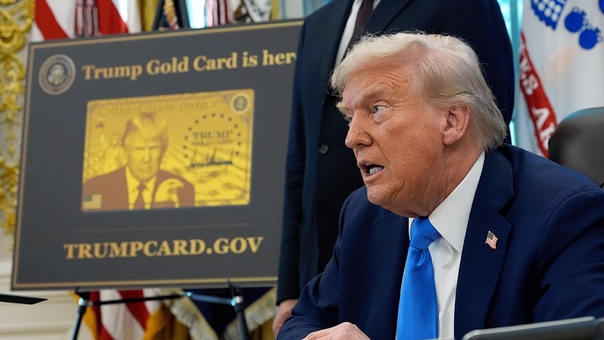Demystifying the GILTI high tax exception: expert insights

Many Americans with foreign businesses are surprised when their profits face additional tax from the US, even after paying high local rates abroad. This double taxation often stems from complex global income rules that few understand. The GILTI high tax exception helps limit that extra tax when foreign earnings exceed a certain threshold, offering a fairer result. This guide breaks down the calculation in plain language so you can see how the rule works and whether it can reduce your total tax bill.
This article is brought to you by Taxes for Expats, a trusted partner helping Americans abroad navigate complex filings with confidence. We clarify the GILTI high tax exception, ensure every calculation meets IRS standards, and confirm that your threshold rate aligns with current regulations. Learn more about our services or contact us to get the help you need.
GILTI: a quick recap for clarity
To make sense of the high tax exception, it helps to first look at GILTI, the rule that ties foreign income back to US tax obligations. Knowing that link makes the 18.9 percent threshold easier to interpret in real terms.
GILTI, or Global Intangible Low Taxed Income, was created to make sure US shareholders of controlled foreign corporations pay their fair share on profits kept overseas. Instead of waiting for those profits to come home, the law pulls certain foreign earnings into the US tax net each year. The calculation compares a CFC’s income to a 10 percent return on its tangible assets – anything above that level can be taxed in the United States even if it stays abroad.
The rule often feels harsh for owners who already pay a significant foreign tax on the same income, which is where the high tax exception comes in.
"If the client’s foreign company already pays high effective foreign tax, an annual election may reduce or eliminate GILTI, but it requires detailed testing and consistency".
– David Lihn, IRS-Authorized Enrolled Agent (EA) and tax manager at Taxes for Expats

What is the GILTI high tax exception?
This rule lets high-taxed foreign earnings sit outside your GILTI calculation so you are not taxed on the same slice twice. With GILTI defined as a US inclusion of net CFC tested income, the focus now turns to the rate test, the 2025 to 2026 changes, and the OBBB update.
Think of the high tax exception as a safety valve that turns off GILTI when foreign tax is already heavy. If a tested unit’s effective foreign rate beats the 18.9 percent threshold, that income is usually left out of your US GILTI math. Under final regulations, the test runs at the tested unit level, not the whole company, which is why clean unit-level books matter.
-
2025 rates in practice
Corporate filers compute GILTI, then take a section 250 deduction of 50 percent, which yields about a 10.5 percent effective US rate before credits; Form 8993 and its instructions walk through that math. -
2026 increases and why they rise
Absent special rules, that deduction drops after 2025, lifting the corporate effective rate to roughly 13.125 percent on GILTI inclusions; individuals can also face higher ordinary brackets in 2026, making modeling essential. -
OBBB and its effect on GILTI
The One Big Beautiful Bill, signed July 4, 2025, recasts GILTI mechanics for corporations by setting a permanent 40 percent deduction for net CFC tested income, pointing to an effective rate near 12.6 percent, while the GILTI High-Tax Exclusion (HTE) keeps operating as an elective shield for income taxed above 18.9 percent.
NOTE! The GILTI high tax exception serves as a smart balancing rule that prevents double taxation when foreign earnings already face a strong local tax. With the 2026 rate hike and the OBBB’s partial relief in play, using the HTE strategically can make the difference between an unnecessary US top-up and a well-optimized global tax position.
What kinds of income clear the high tax exception
Foreign earnings aren’t treated equally under the rules that decide which profits are taxed again in the United States. Some income qualifies for relief because it’s already taxed at a strong rate abroad, while other types remain fully exposed. Understanding where each category falls makes it easier to see how the GILTI high tax exception works in practice.
-
Income taxed above 18.9 percent
When the effective foreign tax rate on a tested unit’s income is higher than 18.9 percent – about 90 percent of the current 21 percent corporate rate – it can qualify for exclusion under the GILTI high tax exception. The calculation is made for each tested unit, though units in the same country can be combined. These details stem directly from the final regulations and Reg. 1.951A-2(c)(7). -
Subpart F income covered by section 954(b)(4)
Some income already qualifies under a separate high tax exclusion in the Subpart F rules. If that election is made, the same income automatically steps out of both Subpart F and GILTI. This coordination was written into the Reg. 1.951A-2(c)(1)(iii), which references section 954(b)(4). -
Income tied to a US trade or business
When a controlled foreign corporation earns income that’s effectively connected with a US trade or business, it’s already taxed in the United States. There’s no need for an election because this income is excluded from gross tested income under Reg. 1.951A-2(c)(1)(i). -
Subpart F income generally
By design, Subpart F income doesn’t fall under GILTI, so there’s no separate election to make. It’s already carved out under Reg. 1.951A-2(c)(1)(ii). -
Active financing and similar items
Active financing income, active rents or royalties, and certain related-party payments can also qualify if they’re taxed at a high rate. The final regulations expanded the election to cover any high-taxed tested income, not just base company income, as long as it meets the threshold. -
Tested loss items
Losses never qualify. The high tax exception only applies to positive tested income – something clarified in Reg. 1.951A-2(b)(2). -
Low-taxed income at or below 18.9 percent
Any income taxed below that rate doesn’t cut. It remains subject to GILTI, since it fails the 90-percent benchmark outlined in the Federal Register discussion of the rule.
To apply the HTE correctly, shareholders must document how each foreign tax payment ties to a specific tested unit, confirm which items pass the 18.9 percent line, and keep consistent treatment across every controlled foreign corporation. The result, when done right, is that genuinely high-taxed income stays out of GILTI – and unnecessary double taxation disappears.
How the high tax exception works
What makes this provision practical is how precisely it measures foreign income. By breaking profits into tested units and applying a rate threshold, it determines which amounts escape GILTI.
Effective foreign tax rate
To fully grasp the concept of effective foreign tax rate, let’s use a typical expat scenario where an American owns a consulting firm in France. The company earns $500,000 and pays $120,000 in French corporate taxes, which equals a 24 percent rate. Since that exceeds 18.9 percent, it’s treated as high taxed and can be excluded from GILTI. In simple terms, the effective foreign tax rate measures how much tax is paid abroad compared to income earned. It’s the key figure that decides whether the high tax exception applies.
Tested units approach
Think of a foreign company as a tree with several strong branches. Each branch might represent a separate part of the business perhaps one operates in France, another in Singapore, and another in Canada. Under the GILTI high tax exception, the IRS doesn’t look at the tree as a whole; it looks at each branch on its own. These branches are called tested units.
A tested unit can be the controlled foreign corporation itself, one of its foreign branches, or a share in another company that passes income through. The rule lets the IRS see how much tax each part of the business pays in its own country. If one unit pays more than the 18.9 percent threshold, its income can qualify for the HTE and stay out of GILTI. This way, high-taxed profits from one branch aren’t mixed with low-taxed profits from another, making the calculation more precise and fair.
How does the election for the high tax exception actually work?
It works as a simple annual choice that ties everything together the effective foreign tax rate and the tested units approach only matter if you decide to make the election. Once you confirm that certain units are paying taxes above 18.9 percent, you can choose to exclude that high-taxed income from GILTI for the year.
- The decision must be applied consistently across all CFCs in the same group.
- An amended return can be filed within 24 months to make or revoke the election.
- Other US shareholders must be notified, and the election reflected on Forms 5471 and 8992.
How to calculate if your foreign income qualifies
The idea behind the calculation is simple: it checks whether the tax you already paid abroad is high enough to keep that income out of GILTI.
Here’s an easy way to picture it. You look at how much foreign tax your company paid and divide it by its total foreign profits. That gives you the effective tax rate. If that number is above 18.9 percent, you’re in the clear for that income under the high tax exclusion.
| Typical scenario | Effective rate | Outcome |
|---|---|---|
| Company earns $1,000,000 abroad and pays $250,000 in foreign tax | $250,000 ÷ $1,000,000 = 0.25 x 100% = 25% | Passes 18.9% threshold – income excluded from GILTI |
| Company earns $1,000,000 abroad and pays $150,000 in foreign tax | $150,000 ÷ $1,000,000 = 0.15 x 100% = 15% | Below 18.9% threshold – income included in GILTI |
NOTE! Through 2025, corporations may claim a 50 percent GILTI deduction under section 250, scheduled to reduce to 37.5 percent for years beginning after December 31, 2025.
Want a quick price for filing with GILTI/HTE reporting? Upload last year’s return for a personalized quote.

Benefits and limits of HTE for US expats
Used wisely, the GILTI high tax exception simplifies compliance and reduces exposure. It’s a practical tool for US shareholders, from the calculation to tested units, and even knowing which income qualifies, but one that carries trade-offs worth weighing carefully.
- The high tax exclusion removes income from GILTI when the effective rate exceeds 18.9 percent, wiping out the inclusion and section 78 gross-up. However, because that income is excluded, the related foreign tax can’t be used for credits – so while you save on GILTI, those taxes no longer reduce US liability elsewhere.
- HTE offers a cleaner annual process when tested unit records are organized and consistent across the CFC group. The trade-off is precision: every calculation and statement must align with Form 5471 and Form 8992, since missing one detail can void the election or trigger an IRS adjustment.
- If a tested unit pays a 25 percent rate abroad, the GILTI inclusion disappears, but those taxes can’t offset lower-tax income from other entities. The benefit lies in full exclusion; the drawback is that unused credits effectively vanish instead of improving your broader tax position.
- The election applies to every CFC in the group, which promotes consistency and avoids selective filings. Yet it removes flexibility – once made, all entities follow the same rule, and any change must happen on an amended return within 24 months that all shareholders sign off on.
As David Lihn, EA explains, “A §962 election can sometimes reduce US tax on CFC inclusions by applying corporate-style rules and credits to an individual, but it affects future distributions and requires precise modeling.”
Real-world cases of the GILTI high tax exception
For many Americans building businesses overseas, the GILTI High-Tax Exclusion (HTE) can quietly determine how much of their earnings stay abroad or end up taxed again at home. These everyday scenarios, familiar to countless expats managing companies across different tax systems, reveal how small shifts in rates can shape real financial outcomes.
In Vancouver, Sara owns a design firm structured as a Canadian CFC that earns $200,000 and pays $50,000 in Canadian income tax, giving her an effective foreign tax rate of 25 percent. Because that rate sits well above the 18.9 percent threshold – 90 percent of the 21 percent US corporate rate – her income qualifies for the GILTI high tax exception. This high tax exclusion keeps her profits out of GILTI, freeing more capital to grow her business without facing an extra layer of US tax.
Down in Portugal, David operates a marketing agency earning $150,000 but paying only 16 percent in foreign tax, falling short of the qualifying mark. With the rate below 18.9 percent, the high tax exclusion doesn’t apply, and part of his income remains taxed under GILTI even after credits are claimed. In Dublin, Maria’s consulting firm pays 19 percent tax, meeting today’s threshold, but a rise in the US corporate rate to 23 percent would push the qualifying line to roughly 20.7 percent – enough to strip away her GILTI High-Tax Exclusion (HTE) advantage overnight.
How do tax experts help you make the most of your HTE?
Navigating the GILTI High-Tax Exclusion (HTE) isn’t just about knowing the 18.9 percent rule – it’s about understanding how it fits into your overall tax picture. A thoughtful review can turn what seems like a technical rule into a real financial advantage for Americans living and working abroad through
- Thorough analysis and ongoing updates: A qualified tax expert reviews your foreign income, effective tax rates, and elections each year to ensure you continue to meet the latest compliance standards.
- Planning for future changes: Staying alert to shifts in US tax policy or foreign tax rates helps prevent surprises and keeps your strategy aligned with long-term goals.
At Taxes for Expats, our specialists focus on helping clients benefit from the GILTI high tax exception while staying fully compliant with IRS requirements. With personalized guidance and decades of cross-border experience, we make sure your structure, filings, and elections work together – so you keep more of your global income and remain confident in every return you file.

FAQ
The controlling domestic shareholders make or revoke the election and must attach the required statement under section 1.964-1 and notify other US shareholders. It may be made on an original return or on an amended return within 24 months, with all affected US shareholders filing within a single six-month window inside that period.
There is no special “962 high tax exception” because the two concepts operate separately. Section 962 changes how an individual’s GILTI is taxed at the shareholder level, while the high tax exception determines whether the CFC’s income enters GILTI at all.
It removes a CFC item from subpart F or GILTI when that item is taxed at a foreign effective rate greater than 90 percent of the section 11 corporate rate. With a 21 percent US corporate rate, that threshold is 18.9 percent.
It can help when foreign tax is below 18.9 percent and you want corporate-level tools like the section 250 deduction and 80 percent indirect credits to reduce US tax on GILTI. The trade-off is a possible dividend tax later when profits are paid out.
The GILTI high tax exception excludes high-taxed tested income entirely when the effective foreign tax rate is above 18.9 percent of the section 11 rate. A Section 962 election taxes an individual at corporate rates so they can use the Section 250 deduction and indirect foreign tax credits, but later cash distributions can trigger a second layer of tax.

Stay IRS-compliant with your business abroad – we’re ready to help


